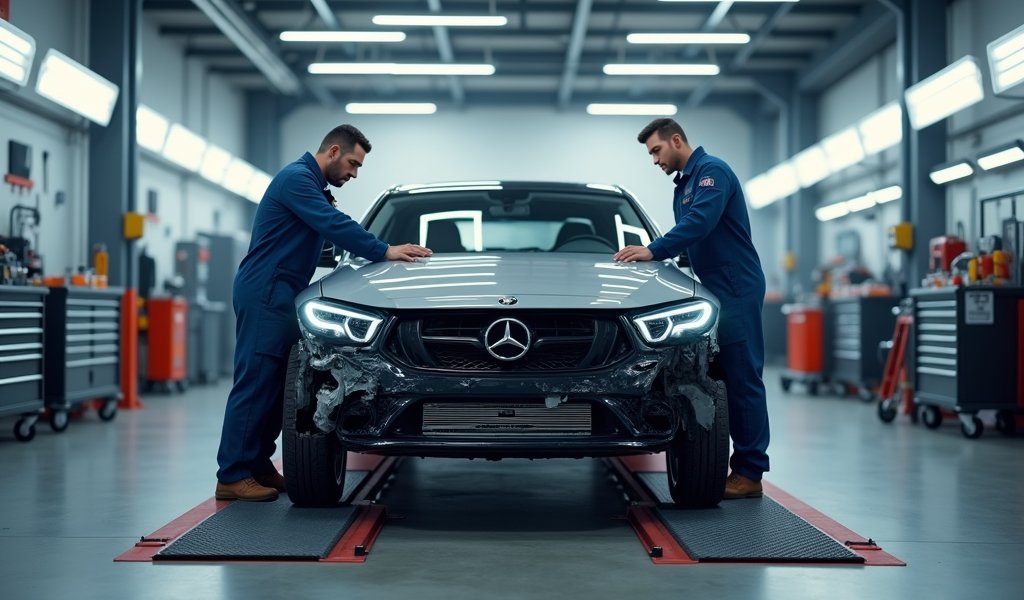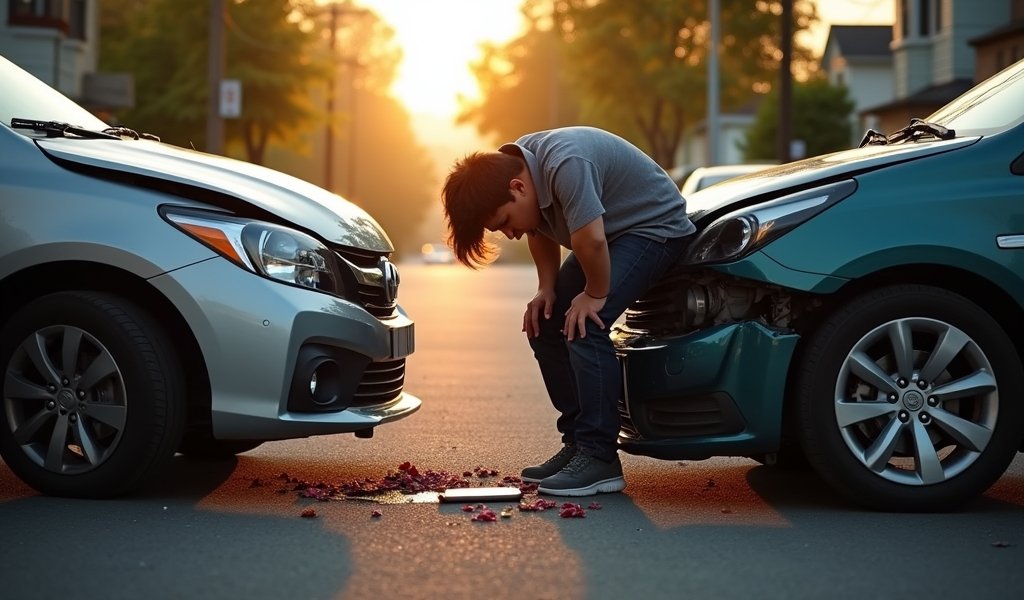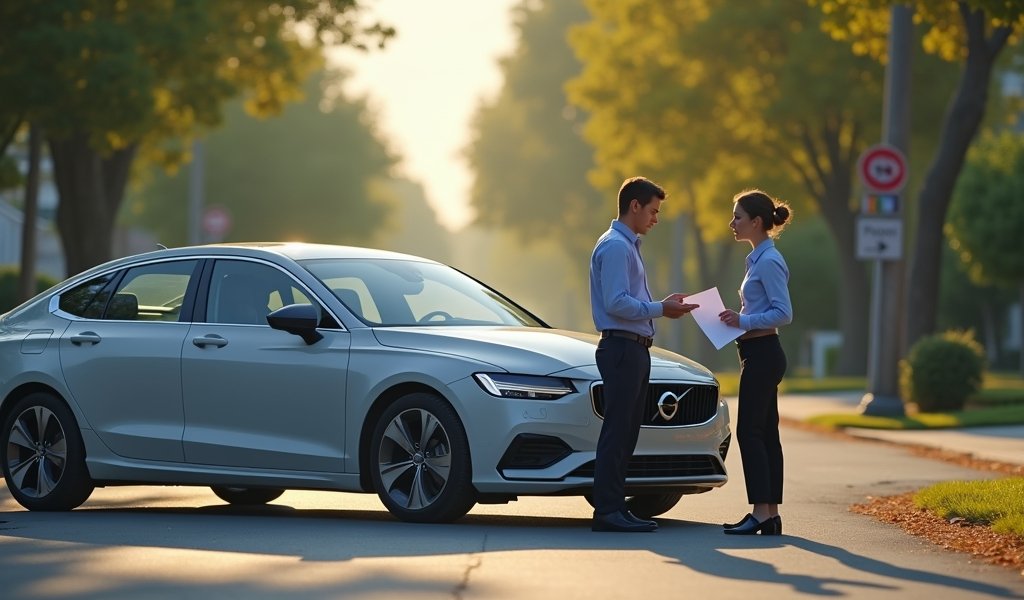Overview
This article provides seven essential steps to take after a car accident: exchange driver details, document vehicle information, collect insurance data, photograph the scene, gather witness information, obtain police report details, and handle medical information properly. Following these steps in the chaotic moments after an accident can save weeks of frustration during insurance claims and protect your interests both legally and financially.
Table of Contents
- Introduction
- Tip 1: Exchange Driver Information
- Tip 2: Gather Vehicle Details
- Tip 3: Collect Insurance Information
- Tip 4: Document the Accident Scene
- Tip 5: Gather Witness Information
- Tip 6: Obtain Police Report Details
- Tip 7: Handle Medical Information Appropriately
- Conclusion
- Frequently Asked Questions
Introduction
The moments after a car accident can feel like you’ve been thrown into a washing machine – everything spinning, adrenaline pumping, and your thoughts scrambled. I’ve seen it countless times in my years working with vehicles and their rattled owners. Whether you’ve experienced a minor love tap or a significant collision, knowing what information to exchange after a wreck isn’t just helpful – it’s essential.
Trust me, I’ve heard the regret in customers’ voices when they say, “I wish I’d gotten that driver’s phone number” or “If only I’d taken pictures of the damage.” The good news? With a bit of preparation and the right knowledge, you can handle post-accident information exchange like a pro.
As someone who’s walked many drivers through the aftermath of accidents, I’ve compiled these seven critical tips to help you navigate this stressful situation. Following these guidelines will not only protect you legally and financially but also ensure your full coverage car insurance works as intended when filing claims.
Tip 1: Exchange Driver Information
First things first – you need to know who you’re dealing with. After ensuring everyone’s safety, approach the other driver calmly (even if you’re fuming inside) and exchange these essentials:
- Full legal names (first, middle, last)
- Current contact information (cell phone number and email)
- Home address
- Driver’s license number and state of issue
Here’s a pro tip from years in the shop: people make mistakes when writing things down while shaking with adrenaline. Instead, ask if you can snap a quick photo of their license. Most folks will agree, and it ensures you get accurate information.
If the person driving isn’t the vehicle owner (like with company cars or borrowed vehicles), jot down the owner’s information too. This detail becomes crucial when insurance companies start sorting things out.
Stay professional during this exchange – even if the other driver seems confrontational. Remember, emotions run high after accidents, and maintaining a level head will serve you better in the long run.

Tip 2: Gather Vehicle Details
Your mechanic brain should kick into gear here – vehicle details matter enormously for insurance claims. Don’t just note “blue sedan” and call it a day. Get specific:
- Make, model, and year of all vehicles involved
- License plate numbers and issuing states
- Vehicle Identification Numbers (VINs)
- Notable features or modifications
Finding the VIN is straightforward – it’s typically visible through the windshield on the driver’s side dashboard, on the driver’s door jamb, or printed on insurance cards. This 17-character code is like your vehicle’s DNA and is invaluable for insurance processing.
When examining vehicles, note all visible damage – even pre-existing dings and dents unrelated to your accident. This documentation prevents disputes later about which damage resulted from this particular incident.
I’ve seen cases where customers get blamed for damage that existed before the accident. Clear documentation is your best defense against these situations, so be thorough with your observations.
Tip 3: Collect Insurance Information
Insurance details are the meat and potatoes of what you need after an accident. In my experience helping customers navigate claims, this information makes the difference between a smooth process and weeks of frustrating phone calls.
Be sure to collect:
- Insurance company name
- Policy number
- Policy holder’s name (if different from the driver)
- Direct claims department phone number
- Coverage dates (verify the policy is current)
Again, photographs work wonders here. Simply ask to take a picture of their insurance card – it contains all this information in a standardized format that’s easy for your insurance adjuster to use.
Be wary if someone seems reluctant to share insurance details or only shows a digital insurance card they won’t let you photograph. In my years helping drivers, I’ve noticed this can sometimes indicate insurance issues you’ll want to document with police assistance.
If the other driver claims they don’t have insurance, that’s a red flag that requires immediate police involvement. Understanding car insurance matters in these moments – about 13% of drivers are uninsured according to industry estimates, and you’ll need to protect yourself accordingly.
Tip 4: Document the Accident Scene
The smartphone in your pocket is your best friend after an accident. As someone who’s examined countless damaged vehicles, I can tell you that proper documentation makes determining fault much clearer.
Capture these crucial elements:
- Multiple angles of all vehicle damage
- Wide shots showing vehicle positions relative to each other
- Road conditions, traffic signals, and relevant signs
- Skid marks, debris, or fluid leaks
- Weather and lighting conditions
Don’t be shy about taking too many photos – I’ve never heard a customer say, “I wish I hadn’t taken so many pictures after my accident.” The opposite happens regularly. Take 30 seconds to walk around and document everything thoroughly.
Record the exact location using cross streets, mile markers, or even drop a pin on your maps app. Note the date and time – these details matter tremendously for accident reconstructions and police reports.
If it’s safe to do so, capture video footage narrating what you see. This can be incredibly valuable later when details become hazy, which happens naturally with stressful events.
Tip 5: Gather Witness Information
Independent witnesses can be worth their weight in gold when determining what actually happened. As a mechanic who’s helped many customers through accident claims, I’ve seen witness statements completely change case outcomes.
Look for people who:
- Stopped to help or observe
- Were nearby when the accident occurred
- May have dashcam footage
- Work at businesses with a view of the accident site
Approach witnesses respectfully, acknowledging they’re doing you a favor. A simple “Excuse me, did you happen to see what happened? Your perspective would really help sort this out” works wonders.
Collect their name, phone number, and email address. If they’re willing, ask for a brief statement about what they observed, and record it on your phone (with permission). Memories fade quickly, so capturing their observations while fresh is invaluable.
In my experience, independent witness accounts carry significant weight with insurance companies since they have no personal stake in the outcome. Their unbiased perspective can clarify conflicting stories between drivers.

Tip 6: Obtain Police Report Details
When officers respond to an accident scene, they create an official record that carries serious weight with insurance companies. As someone who’s walked many customers through the claims process, I can tell you that police reports often become the foundation for determining fault.
Make sure to get:
- Responding officers’ names and badge numbers
- The police report number (typically provided on a business card)
- Information on how to obtain the complete report
- The responding agency (city police, highway patrol, county sheriff)
Police reports typically include officer observations, statements from all parties and witnesses, citations issued, and sometimes preliminary fault determinations. While they’re not the final word on liability, they provide crucial documentation for your claim.
Don’t hesitate to ask questions about the report process. Most officers understand you’re shaken up and will explain how to access the report once it’s filed. Reports usually become available within 3-10 business days after the accident, depending on the department.
If police don’t respond (which can happen with minor accidents in busy urban areas), consider filing a report at the nearest station. Having an official record can protect you if the other party’s story changes later.
Tip 7: Handle Medical Information Appropriately
This is where I’ve seen folks make critical mistakes after accidents. While protecting privacy is important, certain medical details are appropriate to document, especially if injuries are apparent.
Pay attention to:
- Visible injuries to all parties involved
- Statements about pain or discomfort
- Whether emergency services were called or refused
- If anyone was transported to a medical facility
A word of caution from someone who’s seen the aftermath of many accidents: never declare “I’m fine” at the scene. Adrenaline can mask injuries, and problems like whiplash, concussions, and soft tissue damage often appear hours or days later.
Simply state “I don’t know yet if I’m injured” if asked. This honest response preserves your right to seek medical attention later without someone claiming you admitted to being uninjured at the scene.
If you develop symptoms after leaving the accident, seek medical attention promptly and inform your insurance company. Medical documentation creates an official record connecting your injuries to the accident – critical for insurance claims and any potential legal action.
Remember, understanding car insurance coverage for medical claims is essential for getting proper treatment without unexpected bills.
Conclusion
The chaos following an accident can make it difficult to think clearly, but these seven information-gathering tips will guide you through the critical moments:
- Exchange complete driver information
- Document detailed vehicle information
- Collect comprehensive insurance details
- Photograph and document the accident scene thoroughly
- Gather contact information from impartial witnesses
- Obtain proper police report documentation
- Handle medical information appropriately
Having spent years helping drivers navigate the aftermath of accidents, I can assure you that thorough information gathering makes an enormous difference in the claims process. The 15 minutes you spend collecting proper details at the scene can save you weeks of headaches later.
Remember that your safety always comes first. If you’re in a dangerous location, move to safety before beginning the information exchange. And while gathering information is important, maintaining a calm, professional demeanor helps ensure you get the cooperation you need from other parties.
Keep this guide handy – perhaps bookmarked on your phone – so you’ll have these steps available if you ever need them. Being prepared transforms a chaotic accident scene into a manageable situation with a clear path forward.
Frequently Asked Questions
Do I need to call the police for minor accidents?
For minor fender benders without injuries or significant damage, police may not respond in some jurisdictions. However, it’s always best to call and let them decide whether an officer needs to be dispatched.
What if the other driver refuses to share information?
If someone refuses to share information, call the police immediately and remain at the scene. Take photos of their vehicle and license plate while waiting for officers to arrive.
Should I admit fault at the accident scene?
Never admit fault or make statements like “I’m sorry” that could be interpreted as accepting blame. Simply exchange information and let insurance companies determine fault based on evidence.
Can I use my phone to record conversations with the other driver?
Recording laws vary by state, with some requiring two-party consent. Instead, focus on documenting physical evidence and taking notes about what was said after conversations conclude.
What if I discover damage to my car after leaving the accident scene?
Document newly discovered damage with photos immediately and report it to your insurance company as soon as possible. This is why thorough photo documentation at the scene is so important.


Pingback: How to Document a Car Crash for Insurance - knowsyourcar.com